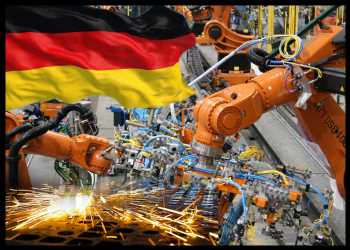Germany’s industrial production growth accelerated at the start of the year ahead of the war in Ukraine, official data revealed Tuesday.
Industrial output advanced 2.7 percent month-on-month, faster than the revised 1.1 percent increase seen in December, Destatis reported. Production was forecast to climb at a slower pace of 0.5 percent.
On a yearly basis, industrial output grew 1.8 percent, in contrast to the 2.7 percent decline posted in the previous month.
Compared with February 2020, the month before restrictions were imposed due to the corona pandemic in Germany, production was 3.0 percent lower in January.
Excluding energy and construction, industrial production was up by 1.3 percent on month in January.
Within industry, the production of consumer goods expanded 4.0 percent and capital goods by 1.2 percent. The production of intermediate goods climbed 0.3 percent.
The mechanical engineering sector made a significant contribution to industrial production growth, while automotive and automotive parts posted a noticeable fall.
Energy production decreased 0.1 percent. By contrast, construction output surged 10.1 percent, thanks to unusually mild weather in January.
The economy ministry said the economic revival is likely to be slowed down by the consequences of the Russian invasion of Ukraine.
It is currently uncertain to what extent the resulting bottlenecks in raw materials and intermediate products will affect production, the ministry said. This could result in a delay in the processing of the companies’ currently high order backlogs.
The end of Covid restrictions, improving supply chains and filled order books were the ingredients for such a rebound; only inflation was a threat, Carsten Brzeski, an ING economist said. But the war in Ukraine has changed everything.
Data released on Monday showed that industrial orders grew 1.8 percent in January underpinned by robust foreign demand and retail sales advanced 10.3 percent year-on-year, driven by non-food turnover.
Source: Read Full Article
